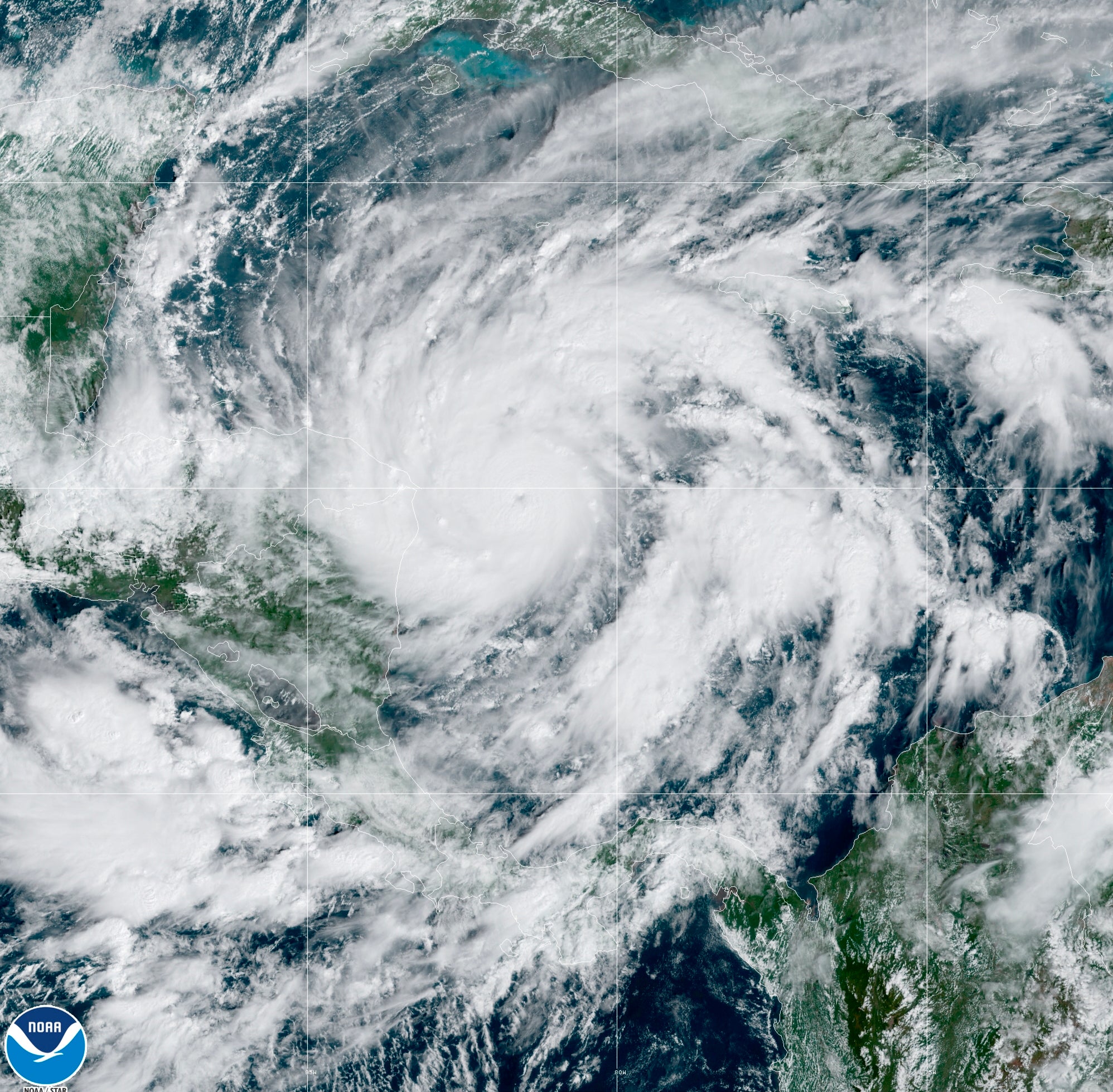Hurricane Eta threatens to bring flooding, storm surge
New Hurricane Eta is quickly gaining force as it heads for Central America, threatening massive flooding and landslides across a vulnerable region

Your support helps us to tell the story
From reproductive rights to climate change to Big Tech, The Independent is on the ground when the story is developing. Whether it's investigating the financials of Elon Musk's pro-Trump PAC or producing our latest documentary, 'The A Word', which shines a light on the American women fighting for reproductive rights, we know how important it is to parse out the facts from the messaging.
At such a critical moment in US history, we need reporters on the ground. Your donation allows us to keep sending journalists to speak to both sides of the story.
The Independent is trusted by Americans across the entire political spectrum. And unlike many other quality news outlets, we choose not to lock Americans out of our reporting and analysis with paywalls. We believe quality journalism should be available to everyone, paid for by those who can afford it.
Your support makes all the difference.New Hurricane Eta quickly gained force Monday as it headed for Central America on the verge of becoming a major hurricane, threatening massive flooding and landslides across a vulnerable region.
Eta had maximum sustained winds of 110 mph (175 kph) and was located about 115 miles (185 kilometers) east of the Nicaragua-Honduras border, according to the National Hurricane Center. It was moving west at 9 mph (15 kph).
It said the storm could strengthen further and become a major hurricane before running ashore by early Tuesday, likely in Nicaragua, where it could bring rains measured in feet rather than inches.
Forecasters said central and northern Nicaragua into much of Honduras could get 15 to 25 inches (380 to 640 millimeters) of rain, with 35 inches (890 millimeters) in isolated areas. Heavy rains also were likely in eastern Guatemala, southern Belize and Jamaica.
Storm surge up to 15 feet (4.5 meters) above normal tides was possible for the coast of Nicaragua. The hurricane center also warned of life-threatening flash flooding and landslides in areas with higher terrain.
Nicaragua’s navy evacuated the Miskito Cays of about 1,650 residents along the coast on Sunday and prohibited launching any boats along the stretch of coastline expected to receive Eta. Offshore residents were taken to shelters in Bilwi, also known as Puerto Cabezas, the primary city of the Northern Caribbean Autonomous Region that is home to some 66,000 people, according to Guillermo González, director of the Nicaragua’s national emergency management agency.
Northeastern Nicaragua is sparsely populated, home to small coastal villages and a large nature reserve.
González said that 88 tons of rice, oil, corn and other food basics had been to the area. The Rio Coco, which makes up part of the border with Honduras, is home to many Indigenous communities. It is known to overwhelm its banks in heavy tropical rains.
Nicaragua’s government has also placed northern provinces on alert as Eta is expected to move through the country’s northern mountains after coming ashore.
Eta's expected path through Central America while dumping prodigious amounts of rain was already raising references to Hurricane Mitch, the 1998 storm that killed thousands in the region.
Eta nearly tripled in strength in just 24 hours, rapidly intensifying from a 40 mph (65 kph) storm Sunday morning to a 110 mph (175 kph) hurricane on the threshold of becoming a major hurricane Monday morning. Forecasters warned that could bring life-threatening storm surge catastrophic winds, flash flooding and landslides when it makes landfall.
Eta is now the eighth Atlantic storm this season to hit the meteorologists’ definition for rapid intensification.
Over the past couple decades, meteorologists have been increasingly worried about storms that just blow up in strength, like Eta. They created an official threshold for this dangerous powering up -- a storm gaining 35 mph (56 kph) in wind speed in just 24 hours.
Earlier this year Hannah, Laura, Sally, Teddy, Gamma, Delta and Zeta all rapidly intensified. An eighth storm, Marco, just missed the mark. Laura and Delta tied or set records for rapid intensification. National Oceanic and Atmospheric Administration climate and hurricane scientist Jim Kossin studied the effect and found storms now are more likely to rapidly intensify than they did in the 1980s and “a lot of that has to do with human-caused climate change.”
Eta is the 28th named Atlantic storm this season, tying the 2005 record for named storms. However, this is the first time the Greek letter Eta is being used as a storm name because after the 2005 season ended, meteorologists went back and determined there had been a storm that should have gotten a name but didn’t.
Hurricane season still has a month to go, ending Nov. 30. And in 2005, Zeta formed toward the end of December.
__
AP science writer Seth Borenstein in Washington contributed to this report.